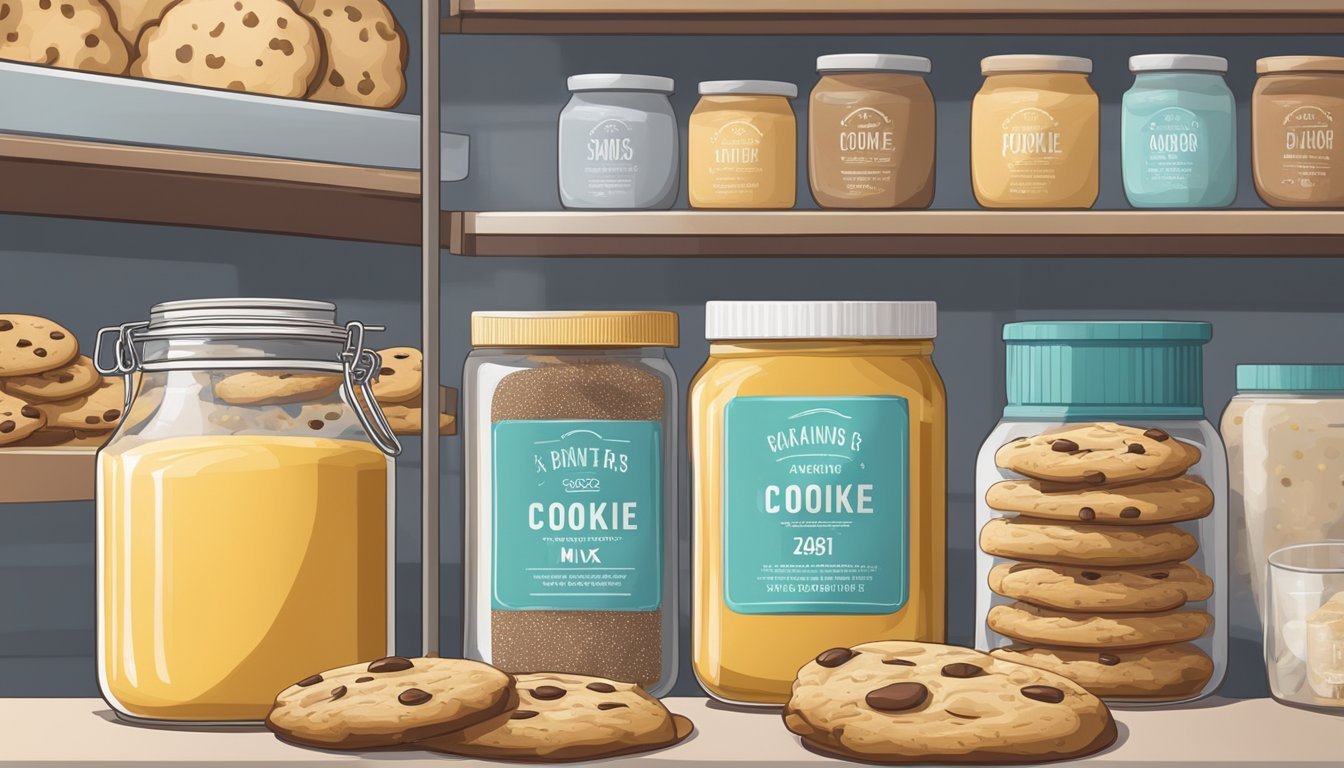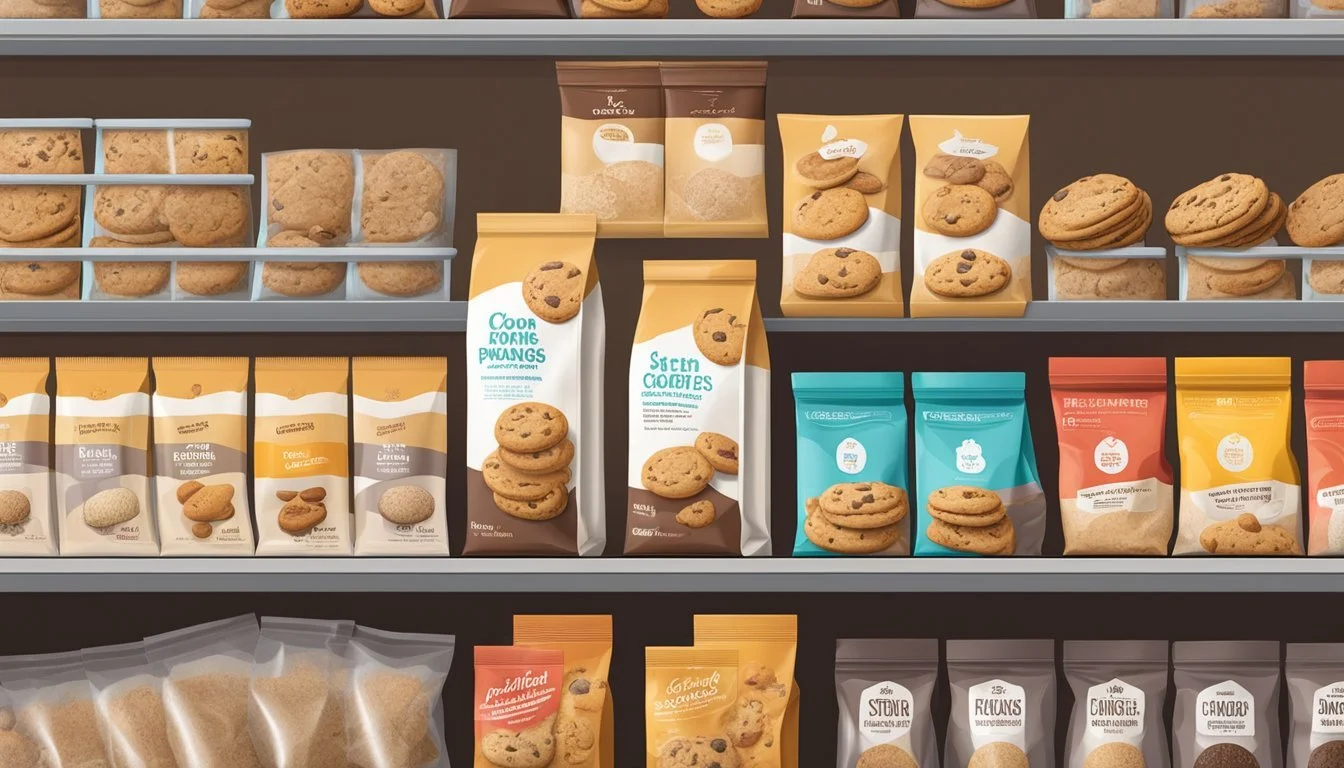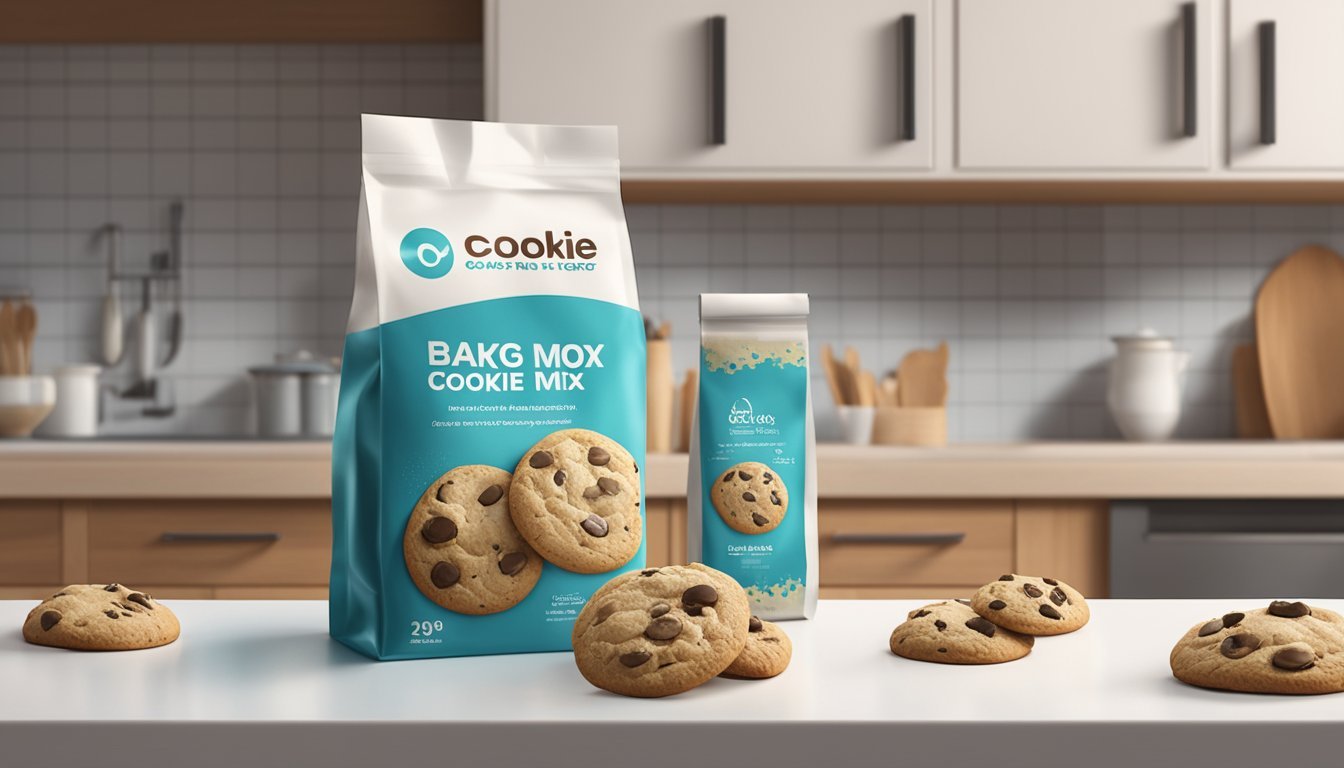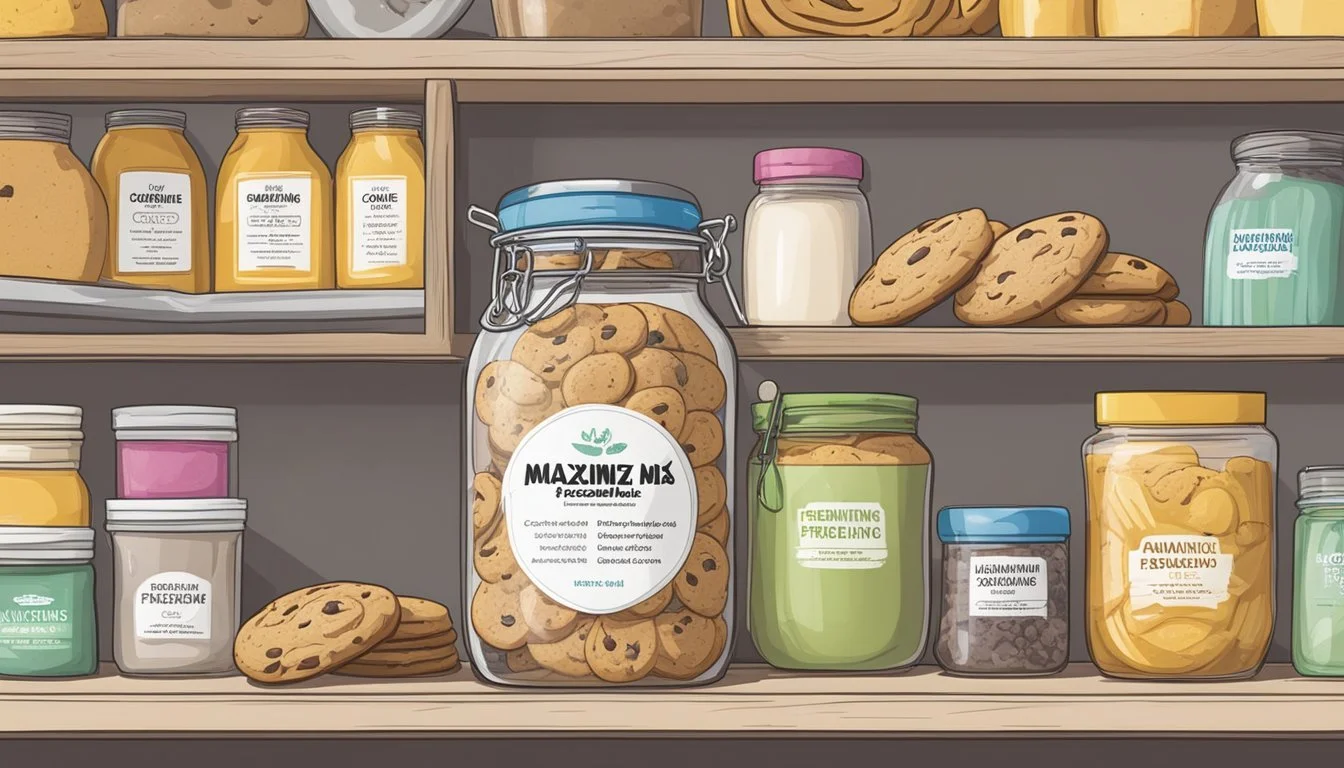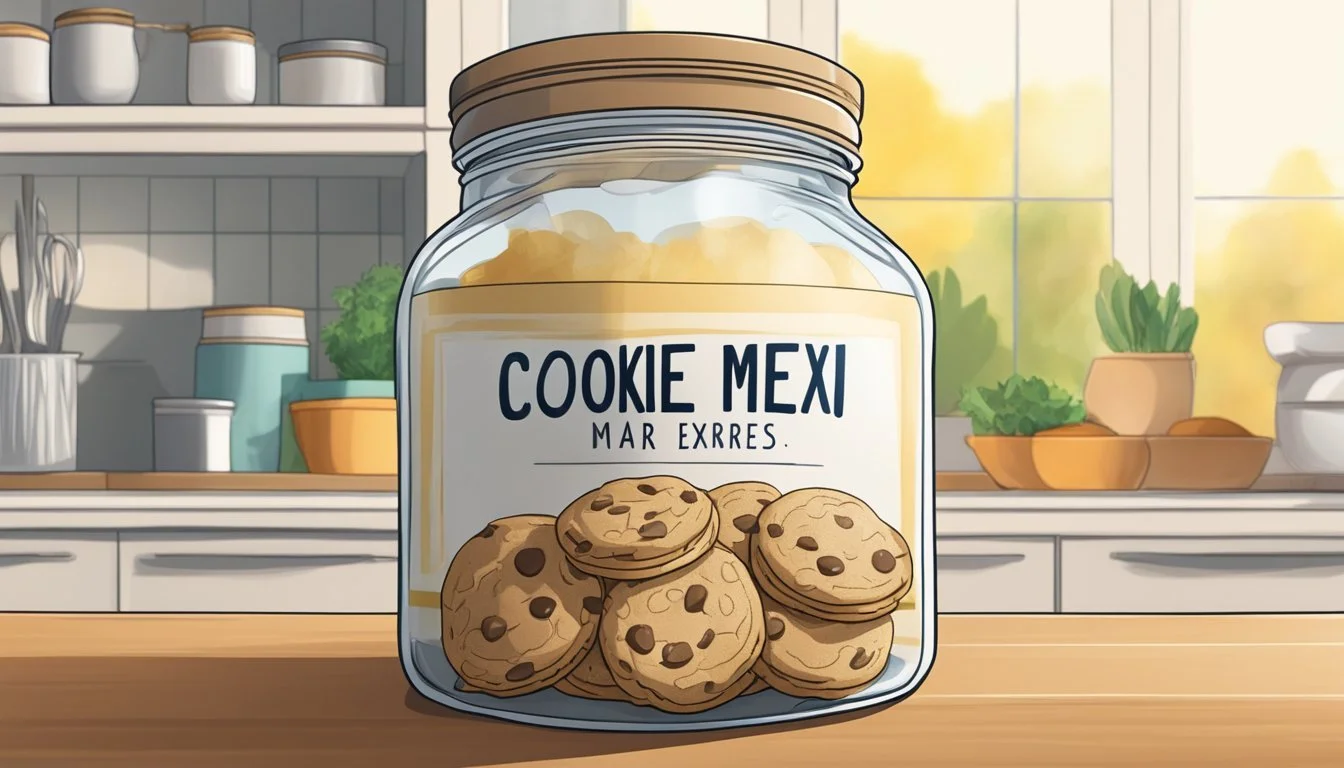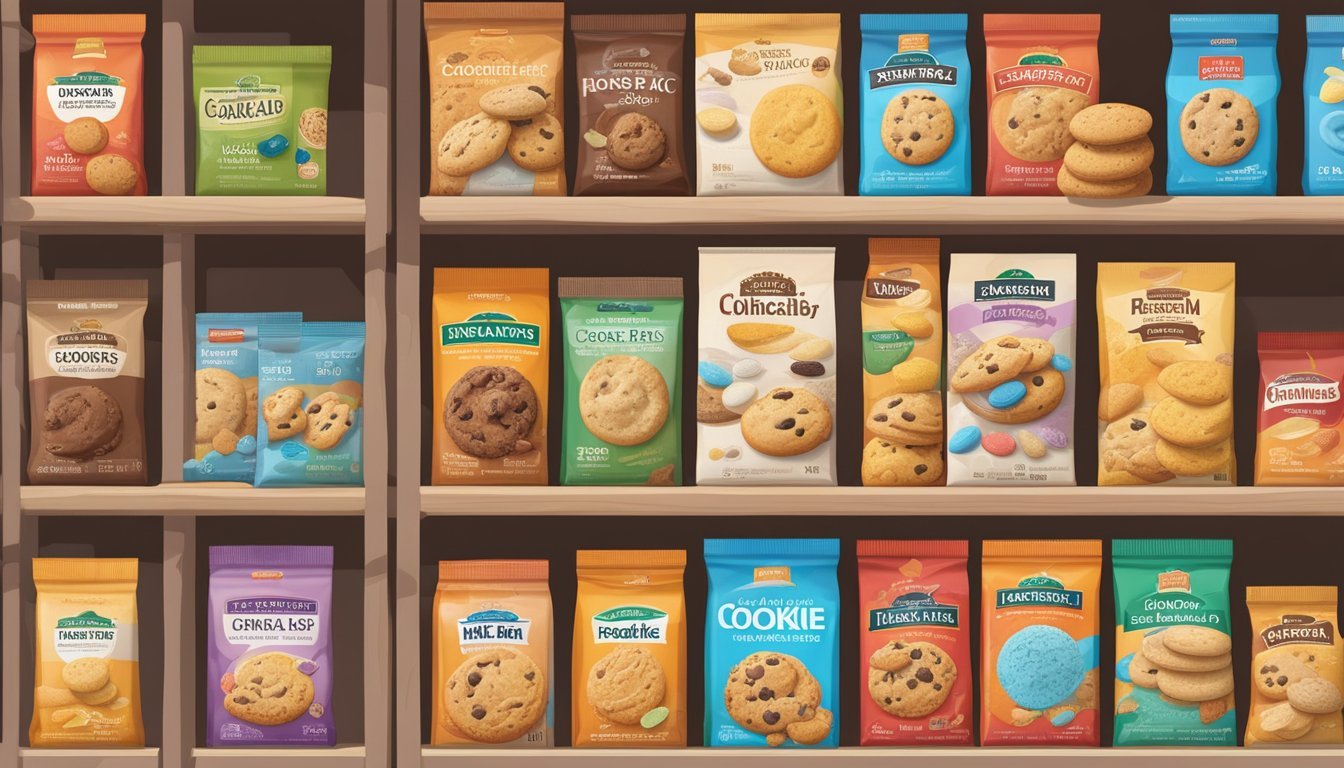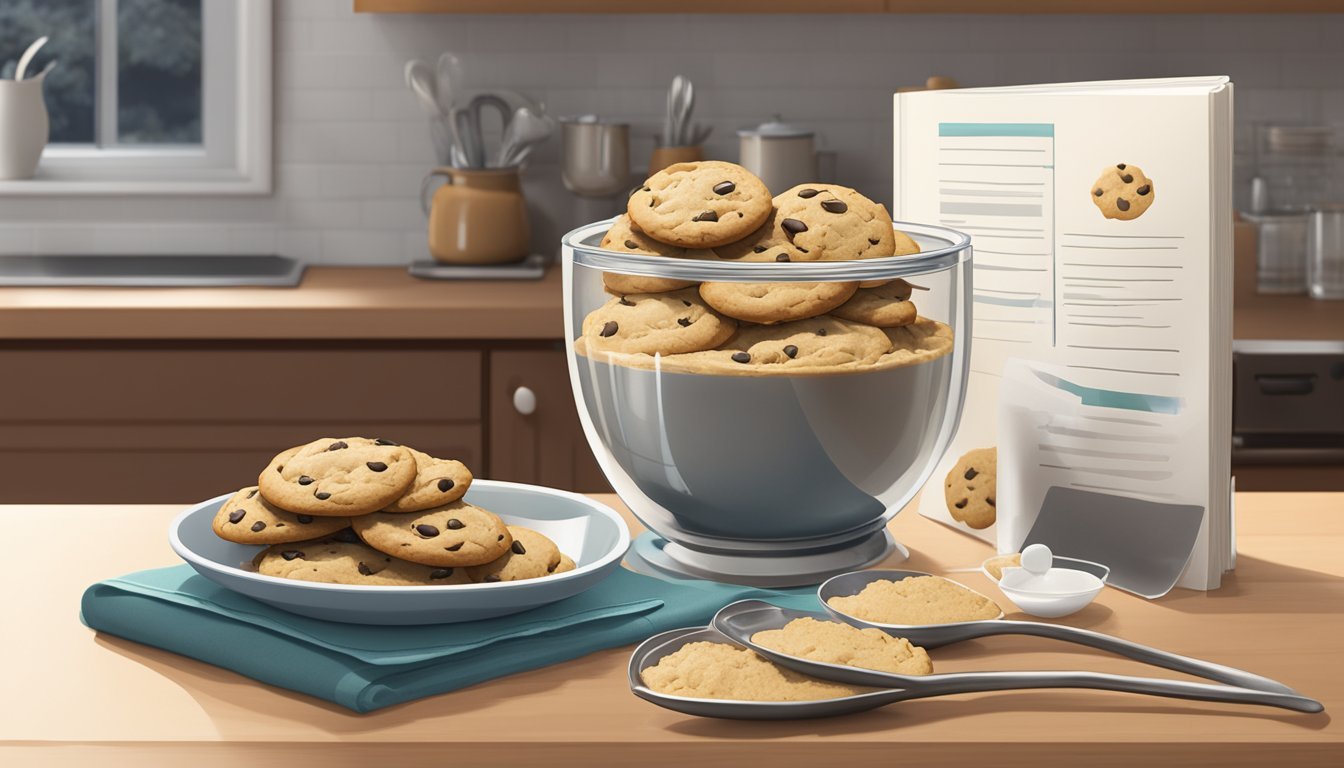How Long Does Cookie Mix Last?
Shelf Life and Storage Tips
Detrmining the shelf life of cookie mix is both practical and economical for anyone who loves baking. The longevity of cookie mix (how long does cookie mix last?) is generally quite substantial due to the dry nature of the ingredients, with most varieties possessing a shelf life that ranges from 12 to 18 months when stored at room temperature. Key factors that play a role in the preservation of cookie mix include its storage conditions and whether the package has been opened.
Once opened, cookie mix should be transferred to an airtight container to maintain its quality. In optimal storage conditions—cool, dry places away from direct sunlight—the mix can last up to six months post-opening without a significant decrease in quality. However, environmental factors such as humidity and temperature fluctuations can shorten this time frame, impacting the mix's performance.
While an unopened cookie mix can last well beyond its best-by date, it is essential to inspect the mix for signs of spoilage before using. Discoloration, off odors, or any signs of pest infestation are clear indicators that the mix should not be used. Taking these precautions ensures not only the safety of the baked goods but also their desired taste and texture.
Determining Shelf Life
When assessing the shelf life of cookie mix, two critical factors come into play: the expiration dates provided by manufacturers and the inherent longevity of the mix's ingredients.
Expiration Dates
Manufacturers typically stamp expiration dates on cookie mix packages to ensure consumers use the product when it is at its best quality. These dates are based on optimal storage conditions—usually a cool, dry place. Once a package of cookie mix reaches its expiration date, it does not necessarily mean that the product is unsafe to consume. However, it may indicate a decline in quality.
Ingredients' Shelf Life
The durability of a cookie mix's shelf life largely hinges on the preservation of its individual ingredients.
Flour: It serves as the primary component and has an extended shelf life, lasting well beyond the expiration date if kept dry.
Sugar: Another key ingredient, sugar contributes to the mix's shelf life by inhibiting bacterial growth.
Leavening agents: These include baking soda or baking powder, which can lose potency over time, potentially reducing the product's performance.
Storage after opening impacts shelf life too. For best results, one should transfer the mix to an airtight container or resealable bag to maintain freshness and extend usability.
Storage Fundamentals
Proper storage extends the freshness and usability of cookie mix. By adhering to optimal storage conditions, individuals can ensure the mix remains safe to consume and delivers the best results when used within the advised timespan.
Pantry Storage
Pantry storage is ideal for unopened cookie mix, as long as the space is cool and dry. Room temperature should be maintained between 60-70°F (15-21°C), well away from heat sources like stoves or sunlight.
Guidelines for Pantry Storage:
Place in a cool, dry area away from direct sunlight
Keep the package sealed until use
For opened cookie mix, transfer to an airtight container to prevent moisture and contaminants
Refrigeration
Refrigeration is not typically necessary for cookie mix, given its dry ingredients. However, if one chooses to refrigerate, this could marginally extend freshness post-opening.
Key Points for Refrigeration:
Ensure the mix is in an airtight container before placing it in the fridge
The fridge should be set to temperatures below 40°F (4°C)
Freezer Storage
Freezer storage can significantly extend the life of cookie mix beyond the pantry’s storage capabilities. Freezing can be suitable for long-term preservation, especially for opened cookie mixes.
Tips for Freezer Storage:
Store in an airtight container or heavy-duty freezer bag
Label the bag or container with the date of storage
Thaw at room temperature before use for best results
Signs of Spoilage
When assessing the quality of cookie mix, several indicators can signal spoilage. Awareness of these signs helps ensure the mix is safe to use.
Visible Mold
The presence of mold signifies immediate spoilage. Mold may appear as fuzzy spots of varying color, such as green, white, or black. Discoloration or any visual deviations from the normal appearance of the cookie mix should also be considered a form of spoilage.
Texture Changes
Cookie mix should maintain a consistent, powdery texture. Any clumps or hardening suggests moisture exposure, which could lead to spoilage. Changes in the texture, such as caking or the mix becoming compacted, are signs of potential spoilage.
Off-Odors
An unusual or strange odor is a clear indicator of spoilage. A cookie mix that has gone bad may emit a stale, sour, or otherwise off smell. Trust one's sense of smell; if the aromatic profile of the powder has significantly altered, it's best not to use it.
Food Safety Concerns
In considering the safety of consuming cookie mix, one must address the risks associated with expired products and practices to prevent foodborne illnesses.
Consuming Expired Mixes
When cookie mixes surpass their expiration date, their safety for consumption is not assured. Manufacturers provide use-by dates to indicate the timeframe within which the product is expected to be used for optimal quality and safety. Consuming expired cookie mix can pose certain risks, as the quality and effectiveness of raising agents and flavors may decline. Although it may be safe to use an expired mix, one should inspect it thoroughly for any signs of spoilage, such as off-odors, discoloration, or presence of mold, which clearly indicate it should not be used.
Preventing Foodborne Illness
Preventing foodborne illness is of utmost importance. Safe storage practices for cookie mix include keeping it in a cool, dry place and, if opened, in an airtight container to extend its shelf life. Proper storage minimizes the risk of ingredients becoming rancid or contaminated with pathogens that can cause food poisoning. Consumers should always adhere to good hygiene practices when preparing mixes, including hand washing and using clean utensils, to reduce the risk of contamination.
Always evaluate each mix on a case-by-case basis, considering both the expiration date and storage conditions, to make an informed decision regarding food safety.
Maximizing Freshness
Maximizing the freshness of cookie mix depends on proper storage techniques that prevent exposure to adverse conditions. Here are specific strategies to ensure cookie mix retains its quality for the longest possible time.
Proper Sealing
An essential step in preserving the freshness of cookie mix is ensuring that it is sealed correctly after opening. If the original packaging is not resealable, one should transfer the mix to an airtight container or place the opened bag into a resealable plastic freezer bag to prevent moisture and humidity from affecting the mix.
Original Packaging: If resealable, squeeze out excess air before sealing.
Airtight Containers: Preferably use containers with tight-fitting lids.
Resealable Bags: Press out all air and seal tightly.
Ideal Conditions
Cookie mix longevity is greatly impacted by the conditions under which it is stored. To maintain quality, cookie mix should be kept in a cool, dry area, away from direct sunlight and heat sources that could introduce moisture or speed up the degradation of ingredients.
Temperature: Store at room temperature, avoiding any fluctuation.
Humidity: A low-humidity environment is crucial to prevent clumping and spoilage.
Location: Keep the sealed mix in a pantry or cupboard, away from appliances and pipes that might emit heat or moisture.
Impact of Environmental Factors
The longevity of cookie mix is significantly influenced by environmental conditions, particularly temperature and sunlight. These factors can accelerate the degradation of the mix's quality.
Temperature Variations
Cookie mix is sensitive to temperature fluctuations. It should ideally be stored in a cool, dry place where the temperature is consistent. High temperatures can lead to a faster breakdown of fats within the mix, possibly causing the mix to turn rancid. Conversely, exposure to extremely low temperatures can cause condensation when the mix is brought back to room temperature, potentially leading to mold growth.
Recommended Storage Temperature: 68°F to 72°F (20°C to 22°C)
Temperature to Avoid: Above 77°F (25°C)
Exposure to Sunlight
Direct exposure to sunlight can have detrimental effects on cookie mix. Sunlight can lead to a rise in temperature that can affect the mix as well as cause the degradation of certain ingredients. To maintain the mix's integrity, it should be stored away from direct sunlight.
Sunlight Exposure: Should be minimized
Storage Tip: Place in a cupboard or pantry away from windows
In summary, maintaining a controlled environment free from extreme temperature and sunlight exposure is crucial for preserving the quality and extending the shelf life of cookie mix.
Utilizing Frozen Mixes
When it comes to extending the life of cookie mixes, freezing is a practical option. It allows for long-term storage while maintaining quality, provided that proper freezing and thawing techniques are used.
Freezing Techniques
Freezing cookie mix can help to preserve its freshness for future use. For best results when freezing, one should:
Transfer the cookie mix to an airtight container or a heavy-duty freezer bag to prevent freezer burn and absorption of odors.
Label the container with the date of freezing to keep track of how long the mix has been stored.
The ideal state for frozen cookie dough mix is unopened. However, even opened mixes can be frozen effectively if one ensures that they are tightly sealed and stored correctly.
Thawing and Baking
Once ready to use the frozen cookie mix, proper thawing is essential for the guarantee of quality baked goods. The steps are:
Refrigerate the mix overnight to thaw gradually, maintaining texture and consistency.
Let the mix sit at room temperature for a short period before use if it requires softening.
After thawing, the mix should be prepared and baked according to the recipe's instructions. It's important to note that previously frozen mixes might require a slight adjustment in baking time.
Understanding Cookie Mix Varieties
Selecting the right type of cookie mix can impact the shelf life and overall results of your baking. From store-bought name brands to homemade blends, and dry mixes to ready-to-bake options, each variety has distinct characteristics that affect its longevity and use.
Name-Brand vs. Homemade
Name-brand cookie mixes are commercially produced and come with a set of specific preservatives that ensure a stable shelf life, typically ranging from 9-18 months when unopened and stored properly. These mixes usually have a consistent quality with detailed expiration dates to guide consumers.
On the other hand, homemade cookie mixes generally lack commercial preservatives and instead rely on the natural shelf life of their components. While the exact duration varies, a homemade dry cookie mix can stay fresh for several weeks to a few months if kept in an airtight container in a cool, dry place.
Dry Mixes Versus Ready-to-Bake
Dry cookie mixes consist of pre-measured dry ingredients and require the addition of wet components like eggs and oil before baking. They present an advantage in shelf life, as they contain less moisture and are less prone to bacterial growth than ready-to-bake mixes. Properly stored, they can retain their quality for up to 1-1.5 years.
Ready-to-bake cookie dough, whether from a name-brand or as a homemade mix, contains raw ingredients and requires refrigeration. This form of cookie mix is more convenient but has a markedly shorter shelf life due to its perishable nature—typically 1-2 weeks in the fridge and up to 6-9 months in the freezer.
Preparing Cookies
When preparing cookies, the freshness of the cookie mix can affect both the flavor and the texture of the final product. It's important to consider the age of the mix and make adjustments if necessary to ensure the best possible outcome.
Baking Considerations
When one begins to bake cookies, precise measuring of ingredients is crucial. Ingredients like baking powder and baking soda, essential for proper rise, should be fresh for the best results. For freshly baked cookies (how long do freshly baked cookies last?), the texture and spread can vary if the leavening agents in the mix have diminished potency with age. They should also ensure that additional components such as butter is at room temperature and eggs are fresh to ensure the mixture combines properly.
The mixing process needs careful attention - overmixing can lead to tough cookies, while undermixing may result in an uneven texture. When adding chocolate chips, vanilla extract, or other flavorings, they should be evenly distributed to ensure that each cookie has a consistent taste.
Adjusting for Mix Age
An older cookie mix may require slight adjustments. If the mix has aged:
Baking Soda/Powder: Consider adding a pinch if the mix is past its prime to ensure it still rises properly.
Egg: Use a medium or large egg as needed by the recipe for moisture and binding.
Butter/Milk: Sometimes a tablespoon extra can compensate for dryness in an aged mix.
Vanilla Extract/Flavorings: A fresh addition can enhance the taste that might have faded.
Always taste the dough if safe (such as eggless mixes) to assess if any additional adjustments are needed to achieve the desired flavor profile.
Shelf Life Extension
Extending the shelf life of cookie mix means maintaining its peak quality for as long as possible. Adhering to the best practices in storage and using preservatives appropriately are both key to maximizing longevity.
Best Practices
Proper storage conditions are crucial for keeping cookie mix at its best before reaching the expiration date. One should store cookie mix in a cool, dry area away from direct light or heat sources. Optimal storage conditions can significantly improve shelf life. Here are specific steps to take:
Keep it sealed: Always reseal the original packaging. If the seal is broken, transfer to an airtight container.
Avoid moisture: Cookie mix should be kept in an environment that is free from moisture to prevent spoilage.
Temperature control: Store the mix at room temperature, ideally between 50-70°F (10-21°C).
Using Preservatives
Preservatives can help extend the shelf life of cookie mixes by inhibiting the growth of molds, yeast, and bacteria. One can find natural and artificial preservatives in the market; however, it's essential to use them as instructed for safety and effectiveness.
Natural preservatives: Examples include ascorbic acid (vitamin C) and tocopherols (vitamin E), which can be added to the mix.
Artificial preservatives: These could include calcium propionate or sodium benzoate, which should be used according to the food safety guidelines.
Remember, while preservatives can prolong shelf life, they should be used judiciously to maintain the quality and nutritional value of the cookie mix.
Exploring the Role of Individual Ingredients
The shelf life and freshness of cookie mix are contingent on the stability and interaction of its individual ingredients. Here, we will look at how these components can affect the mix's longevity and how one can identify spoilage.
Impact on Longevity
Each ingredient in a cookie mix plays a significant role in determining the overall shelf life of the product. Ingredients such as flour and sugar are dry and stable, contributing to a longer shelf life when stored properly. They typically do not support bacterial growth due to their low moisture content. Conversely, mixes containing nuts or fats can go rancid more quickly because of the oils they contain. Rancidity is a form of spoilage that occurs when oils oxidize, often leading to an unpleasant taste and odor.
Salt serves a dual role in cookie mix; it is essential for flavor, and it acts as a preservative that can extend shelf life by inhibiting the growth of certain bacteria and molds.
Ingredient Role in Longevity Flour Provides stability Sugar Reduces moisture content Nuts/Fats Risk of rancidity Salt Preserves freshness
Spoilage Indicators
Identifying when a cookie mix has gone bad is crucial to prevent an unpleasant experience. A clear indicator is the presence of an off smell, a telltale sign that the fats or nuts may have turned rancid. Additionally, any visible mold or an unexpected change in the flavor profile could suggest that the mix should not be used. Clumping in the mix could also indicate that moisture has entered the packaging, potentially compromising the shelf life and safety of the mix.
Indicator Possible Cause Off smell Rancidity or mold growth Mold Moisture contamination Odd flavor Degradation of ingredients
In summary, the preservation and potential spoilage of a cookie mix rely significantly on the nature of its ingredients and how they are stored. Recognizing the signs of spoilage is essential to ensure that cookie mix is used when at its best.

